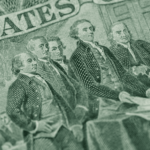What can people do when they work together? Quite a lot, it would seem. Anyone who has worked on an effective team has likely been amazed at both the dynamics and the results. They are equal parts gratifying and awe-inspiring. The whole is so much greater than the sum of its parts that, quite simply, it beggars belief.
The key, to be obvious, is teamwork. But while that’s passing simple, it’s far from easy. In truth, it’s incredibly hard.
This author was privileged to play on a state championship high-school football team that was rated third in the country. On the strength of some small part in that matter and a few other minor virtues, he later entered the United States Military Academy at West Point. In the latter case even more than the first, but alike in both instances, many disparate persons had to be fused into a coherent, single-minded team.
At the end of the first day of West Point training, all personal property except one’s watch had been taken and replaced with standard issue clothing and gear. Everyone had been taught to march in step with one another, strictly adhering to a single cadence. They advanced together, turned together, stopped together. Then they marched to Trophy Point and took an oath to support and defend the Constitution against all enemies foreign and domestic—together.
Far more could be said, but you get the point. Teamwork requires focus and subordination of self to a common goal—the very opposite of today’s zeitgeist in America. Can teamwork be abused? Of course it can. Witness gangs, organized crime, drug cartels, the Nazis, the Assyrians, the Huns, the Mongols, quite a number of caliphates, and many others. Almost anything good can be abused. Americans are overwhelmingly overweight today. Is food evil?
But against the Nazis, for instance, came America—unified as never before. The country changed from a highly rural and decentralized country into the world’s military and economic powerhouse, all because it was unified. (This is oversimplified, of course. Much of value was lost in that transition. This is no apologetic for empire, rather a discourse on the power of unified action.)
America’s unique contribution, at least at its founding, was a remarkable unity of mind coupled with a diversity of organization and activity. Many of the country’s first inhabitants were fugitives from persecution in Europe. They were products of the Protestant Reformation. Some accepted Calvin’s Law of the Lesser Magistrate as a fundamental element of restraint on rulers. Others such as congregationalists opposed monarchy on the basis of their decentralized model of church governance and the severe persecution many of them had endured at the hands of governments and/or churches.
Those who were not Christian were influenced by seemingly compatible arguments from Locke and Paine. America would be a multi-partite entity with a controllable center voluntarily constructed by the states. Several historical one/many examples were doubtless relied upon for wisdom (many listed in this space previously), but perhaps none more than ancient Israel, which worshiped one God in one place by one law, yet existed and functioned in 12 tribes in which further divisions by major and minor family lines gave structure and efficiency.
What has all this to do with us? Not much nationally, unfortunately. The dividers have done a masterful job of setting us at each other’s throats while the unifiers, to oppose them, relied upon common sense and common belief—neither of which were truly common.
President Biden’s efforts to further divide us have succeeded to some extent—perhaps not as much as he hoped. Many of those flooding across our southern border actually value the things that made America great. Still, immense damage has been done.
But the value of teams remains, and organizations that make use of them can be of great value to others. The McAlvany companies have long been numbered with such organizations. Many employees have been with the company for over two or even three decades. Each has been brought in with consideration for character as well as ability. And a constant focus on the needs of each client or customer has been key since ICA’s (McAlvany Precious Metals’ predecessor) founding over 50 years ago.
You will hear David talk often of team. He is all about the organization and those it serves. He has carefully selected a group of like-minded professionals who are complementary in their abilities and unified in their goal. They are also committed to educating their clients and customers, as well as others who tune in. Be sure to make their publications, summarized below, part of your regular reading or listening.
Key Takeaways:
- When Buffet moves to cash, what should you do?
- What does King Kong vs. Godzilla look like in the investment world?
- America’s debt burden—like an anchor on an Olympic swimmer
- You can make things happen even when things are not happening
The McAlvany Weekly Commentary: Wimpy FED “I’ll Gladly Pay You On Tuesday”
David and Kevin begin the program this week by briefly recounting a number of big events occurring worldwide. Investors tend to reach a number of conclusions about all these developments, and many remain optimistic. However, those with the most to lose, CEOs and high-level investors, are selling stock and going to cash in a very big way. Warren Buffet, for instance, has sold 115 million shares of Apple and kept the proceeds in cash. Meanwhile the Fed remains sanguine about inflation even as virtually every pertinent indicator is reflecting its resurgence. Japan and China likewise continue to try to balance the opposing priorities of economic operation and debt service. The problem for the US is that, in order to create more dollars, more lenders must be found—and lenders are getting scarce. China not only doesn’t buy our Treasury paper anymore, it’s selling what it has and buying gold with the cash. The hosts also discuss the immense power of currency fluctuations vis-à-vis one another using personal anecdotes from past international experiences. And what does Paul Volker have to do with Akira Kurosawa? Be sure to listen in to find out.
Credit Bubble Bulletin: Citadel vs. Jane Street
Doug begins his weekly update with the observation that the Fed’s recent actions have encouraged more frenetic activity in US markets. Further, loose US policy has apparently buoyed other markets, as well—including those in the UK, Canada, Japan, Germany, France, Italy, Spain, and China, to name a few. Precious metals and commodities have also been on a distinct upward trajectory. Doug then takes a look at two behemoths on Wall Street, Citadel Securities and Jane Street Capital. How big are they? “Citadel (23%) and Jane Street (10.4%) combine for a third of ‘U.S. equity volume’.” He lays out the primary distinctives and activities of each company in recognition of each one’s extraordinary size and influence. Toward that end, he observes that, “the most eye-opening sentences in [a Financial Times article are that] ‘Jane Street is particularly dominant in fixed income ETFs, accounting for 41% of all primary market activity according to its bond prospectus. The trading firm has used this as a bridgehead to break into corporate bond trading territory long dominated by banks.’” The wealth involved, the debt that countries are taking on, and the size of many market players are all mind-boggling. But in the midst of these immense developments, Doug makes a sobering observation: “I’ve studied enough market history—including the fateful ‘Roaring Twenties’ period—to be uncomfortable with much of what I observe these days.”
Hard Asset Insights: Do the Right Thing
Morgan begins his missive this week with comments from the IMF’s Managing Director Kristalina Georgieva. She observed that the level of federal revenue required for debt servicing has risen from seven percent in 2015 to 17 percent now. Her words for this development are “mind-boggling.” These costs for debt servicing are clearly on the verge of becoming untenable, and whether it’s fair or not, the Fed has become responsible for whether they can be paid. If interest rates are raised any further, debt servicing will quickly ruin the budget. Morgan acknowledges the bad hand that Fed Chair Powell was dealt when he took over as head of the organization. Powell played the hand as best he could, but now he’s out of options. The most significant criticism, voiced by Stanley Druckenmiller and quoted by Morgan, is over the dovish turn the Fed took beginning last December. “[The Fed] worked so hard, and they did so much work when they went from basically zero to five percent. I’d hate to see them all throw it away here.” That dovish about-face caused inflation to do an about-face as well, and ditto for consumer sentiment. So while investors are having a party, consumers are hard pressed. The productive class’s optimism—or lack of same—is becoming hard to ignore.
Golden Rule Radio: Precious Metals Update
Miles kicks off the program with a quick chart synopsis of developments in metals and other key markets. There were no seismic shifts, but, in general, says Miles, “Things that are up spent the week down, and things that are down spent the week up.” He doesn’t foresee major movements in any of these markets in the short term, but his analysis sets up a discussion of some interesting opportunities. The most intriguing of these, says Tory, is ratio trading between platinum and palladium. And while the hosts agree that, absent any catastrophic event, the likelihood is that the metals will trade sideways into their summer doldrums pattern, that prospect brought out a significant question: Have any of the metals seen a pattern of lower highs in the recent past? Virtually no investment value travels in a straight line for long, so such a pattern would be helpful to determine trends. Miles works his way through the charts, showing that some of the metals have indeed shown patterns of higher or lower highs or lows. This has particular meaning for the platinum/palladium ratio, the details for which are explored in the program. Miles then delves into the silver picture, and comes away “a little bit bullish.” Such a comment from him is unusual, so perhaps silver has higher prices in its near-term future.















